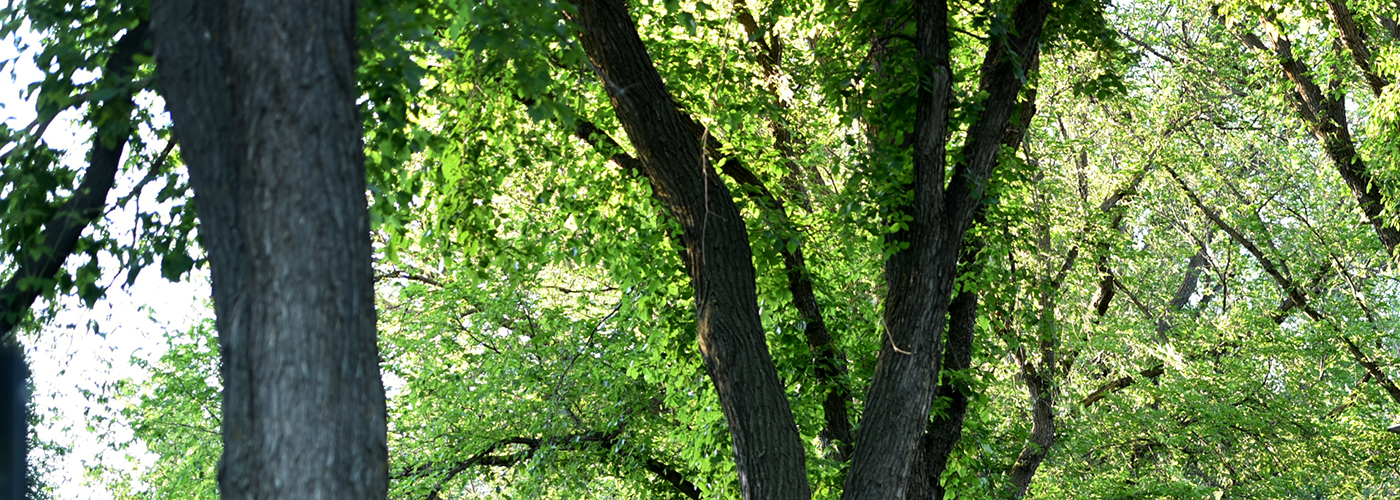
The City of Prince Albert is responsible for maintaining trees on public property (City-owned trees). Property owners are responsible for maintaining the trees on their private property.
Municipal tree services include:
- Tree removal
- Tree trimming
- Tree planting
- Fertilizing
- Disease diagnosis
- Pest diagnosis
- After hours emergency service, such as tree damage during a wind storm
Call the After Hours Assistance number for emergency tree services.
Looking for information about Pesticides? Find it here.
Tree Maintenance
Our Urban Forest department manages the maintenance of City-owned trees, including trimming, removal and planting. See the Forestry Management Plan for detailed information on how the City plans and manages city trees and vegetation in Prince Albert.
|
When does the City remove trees? |
|
We remove trees when they are a safety concern based on the three "D's" - Dead, Diseased or Dying. We prioritize removal schedules by severity of the issue. The City removes trees all-year-round. |
|
How does the City decide which trees are removed first? |
|
As a guideline, the Urban Forest department will prioritize each work order based on the following criteria: EmergencyTree poses immediate safety concerns and danger to the public. For example:
HighTree interferes with City infrastructure, is damaging property, has been approved for removal due to building/development, has been approved due to confirmed disease and/or obstructs public or service access. For example:
LowGeneral tree pruning and maintenance. For example:
|
|
Why does it take so long to get a tree near my property trimmed? |
|
Every spring our Urban Forest department receives hundreds of work requests. It can take our staff months to complete the large number of requests we get. A windstorm can prevent us from getting to your tree right away, as safety hazards and dangerous trees take priority and move to the top of our work list. |
|
Why are some private-owned trees removed or pruned? |
|
The City prunes private trees that impede access to sidewalks, roadways or block the view of signage. Right of way access is to be provided to ensure the safety of pedestrians and drivers. In addition, trees that are categorized as Emergency or possibly High priority. |
Dutch Elm Disease
Currently, the most significant issue affecting trees in the City of Prince Albert is Dutch Elm Disease (DED.) If you are unsure if the tree(s) in question are Elm, we would encourage you to contact the Community Services Department so that proper identification can be made and direction provided.
| What is Dutch Elm Disease (DED)? |
| DED is caused by a fungus spread by tiny elm bark beetles that breed under the bark of dead or dying elm wood. If that wood contains the DED fungus, each new generation of beetles can infect healthy elms. The Government of Saskatchewan website Dutch Elm Disease provides information on how you can help prevent DED.
DED was first discovered in Saskatchewan in 1981 and continues to be found in more areas of the province every year. DED is caused by a fungus that clogs the tree’s water conducting system, which eventually causes the tree to die, usually within one or two seasons. |
| Signs of DED |
Beginning in late June to mid-July, look for:
Several other diseases have similar symptoms so the only way to confirm DED is in the lab. Please contact the City of Prince Albert's Community Services for further assistance. |
| Elm Tree Pruning Ban April 1 - August 31 |
| The province annually bans the pruning of elm trees from April 1 – August 31. The ban ensures that elm bark beetles, which transmit Dutch Elm Disease (DED), are not attracted to the pruning cuts when these beetles are most active. |
| Removing an Elm Tree |
| Elm removal can occur at any time of the year with approval from the Municipal DED Inspector, however the entire tree must be removed and all waste elm be transported to the nearest approved landfill site in the municipality where the elm was removed. |
| Disposing of Elm Wood |
| Elm stumps and any fallen branches or any wood from a fallen elm tree must be disposed of properly at an approved landfill site. Under no circumstances should elm wood be left lying around or stored for firewood or other purposes. In Prince Albert, the City’s landfill, located north of Prince Albert, is an approved site. Please note that there will be a fee for commercial hauling of green waste. |



